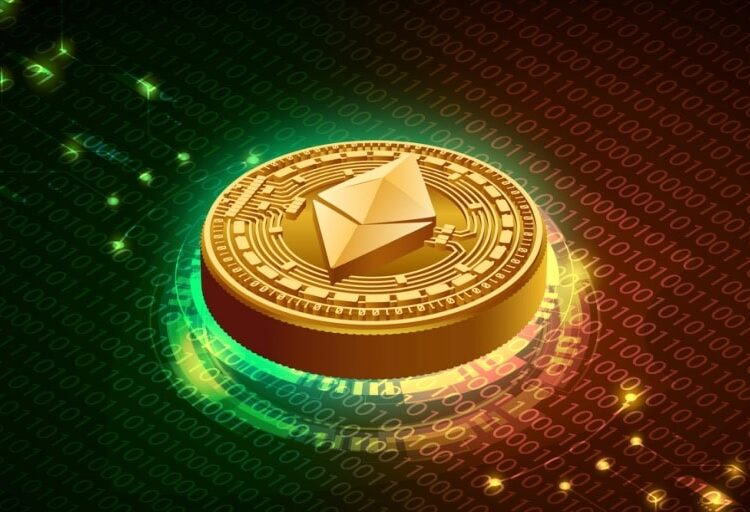In the ever-evolving space of cryptocurrencies and blockchain, NFTs are considered a revolutionary concept, as they have transformed the way we trade, create, and perceive virtual assets. This is why these non-fungible tokens have taken the world by storm and provided numerous opportunities for investors, creators, and crypto enthusiasts.
The Binance data shows that Ethereum is one of the most popular blockchains, as it has brought many functionalities and capabilities, which is why it has become the go-to platform for creating NFTs. Because it has a vibrant and robust ecosystem and infrastructure, Ethereum offers a decentralized and secure environment both for sellers and buyers.
In this article, we will offer more details on how people can create NFTs on the Ethereum blockchain.
Breaking Concepts: Creating vs. Minting NFTs on Ethereum
First, let’s help you understand some terms that will guide you better in the intriguing world of NFTs. NFTs can have a photo or video format, which consists of virtual files, like JPG, MP4, PDF, PNG, MP3, and so on. Creating an NFTs refers to generating the artistic part of the non-fungible tokens.
But from a blockchain-development point of view, the creation of NFTs is more about minting, which refers to the on-chain transactions, which include all the metadata and digital files, and transforming them into NFTs. Now, let’s move on to how you can develop NFTs on Ethereum.
Choose a Platform
The first thing you need to do when you want to create an NFT is to choose a platform that is perfect for your preferences and needs. Luckily, you have plenty of options from which to choose something suitable, including OpenSea, Mintable, Rarible, and SuperRare, among others.
Each of these networks has its own community, features, and fees, and this is why you should do a little research before you decide to choose one. Additionally, you should think about how your journey on the platform will be, as some of the networks allow the creation of NFTs directly on their main chain, while others use third-party services.
OpenSea is the most popular NFT platform for Ethereum-based projects. It was launched in 2017, and since that time, it has gained more than $20 billion in trading volume, having a huge number of virtual artwork listed and representing 2 million NFTs. However, you can also consider a crypto exchange, as some of them also allow the creation of NFTs on the platform, offering the possibility to create or mint the NFTs directly.
Connect Your Wallet
After you have chosen a suitable platform, it is time to connect your wallet to the selected option. A wallet is a hardware or software device that helps you store private keys, with which you can interact with the blockchain and access your funds. After this, you will need to go through numerous steps, including creating a smart contract.
Upload the Content
Uploading the content is the next step to consider, and it will be done on the chosen platform. Your content can be in every digital file you prefer, be it a video, image, song, or document that you wish to tokenize. Then, you need to provide some metadata, including the description, name, NFT attributes, and the royalty percentage that you want to receive from the following sales.
Mint Your NFT
After uploading your content, you need to mint your NFT, meaning that you will register it on the blockchain. In this process, you will need to sign a transaction by using your wallet and pay the gas fee, which can vary depending on the complexity of the smart contract and the network congestion. After the transaction is confirmed, your non-fungible token can be minted and offered a contract address or a unique token ID, which will help it get identified on the blockchain.
List Your Artwork
The next step in creating your NFT is to list it for sale on the selected platform. You will be able to set your terms and price for the non-fungible token created, be it an auction, a fixed price, or a bundle. Additionally, you will need to decide if you will only accept ETH as payment or if you will also consider tokens and whether you want to enable bids or offers from the buyers. Listing an NFT is a simple process, as you can also do it for free. However, on other platforms, you might need to pay some transaction fees.
Promote Your Digital Pieces
After all the technical parts are done, you will need to focus on promoting your project in order to attract more collectors and buyers. This can be done by using social media, newsletters, or blogs that will show your NFTs alongside their history, unique features, and value. Don’t forget to keep track of the market demand and trends in the NFT landscape to adjust your strategy and price if needed.
Let’s Respond to the Most Asked Questions About NFTs
Can NFTs Be Created for Free?
The answer to this question is yes, as some platforms offer the possibility to create non-fungible tokens for free. However you might need to pay the gas fees, but they will most likely be in the form of a small percentage after you sell one of the created artworks.
Are Non-fungible Tokens Protected by Copyright?
Yes, NFTs are protected by copyright, which is granted after the original work is minted on the blockchain. The copyright owner is the creator, which remains the same even after the purchase of the NFTs. However, the copyright ownership can be transferred if the creator has specifically asked for this.
Can an NFT Be an Image?
Yes, digital images can become NFTs, whether taken with a phone or digital camera and whether the photo is manipulated or not. Additionally, you can also create vector graphic images if you have digital art skills, and as you can see, you have endless possibilities if you want to develop NFTs. In conclusion, creating NFTs is not that complicated, and with a little bit of research, you can become a master in this domain.




